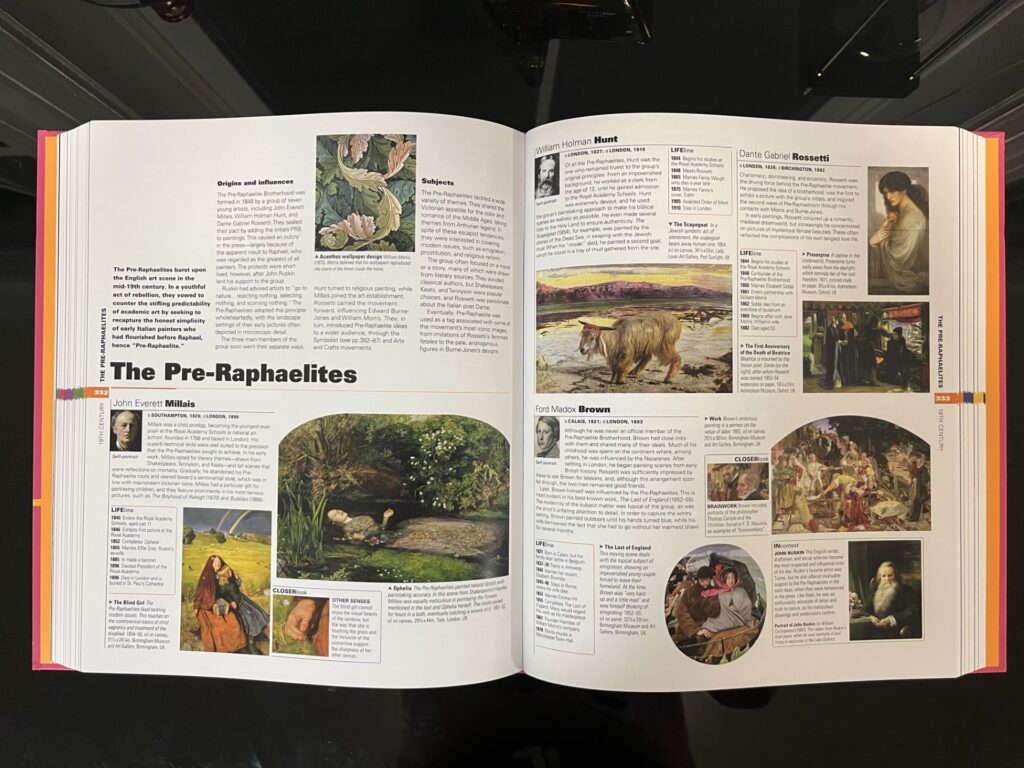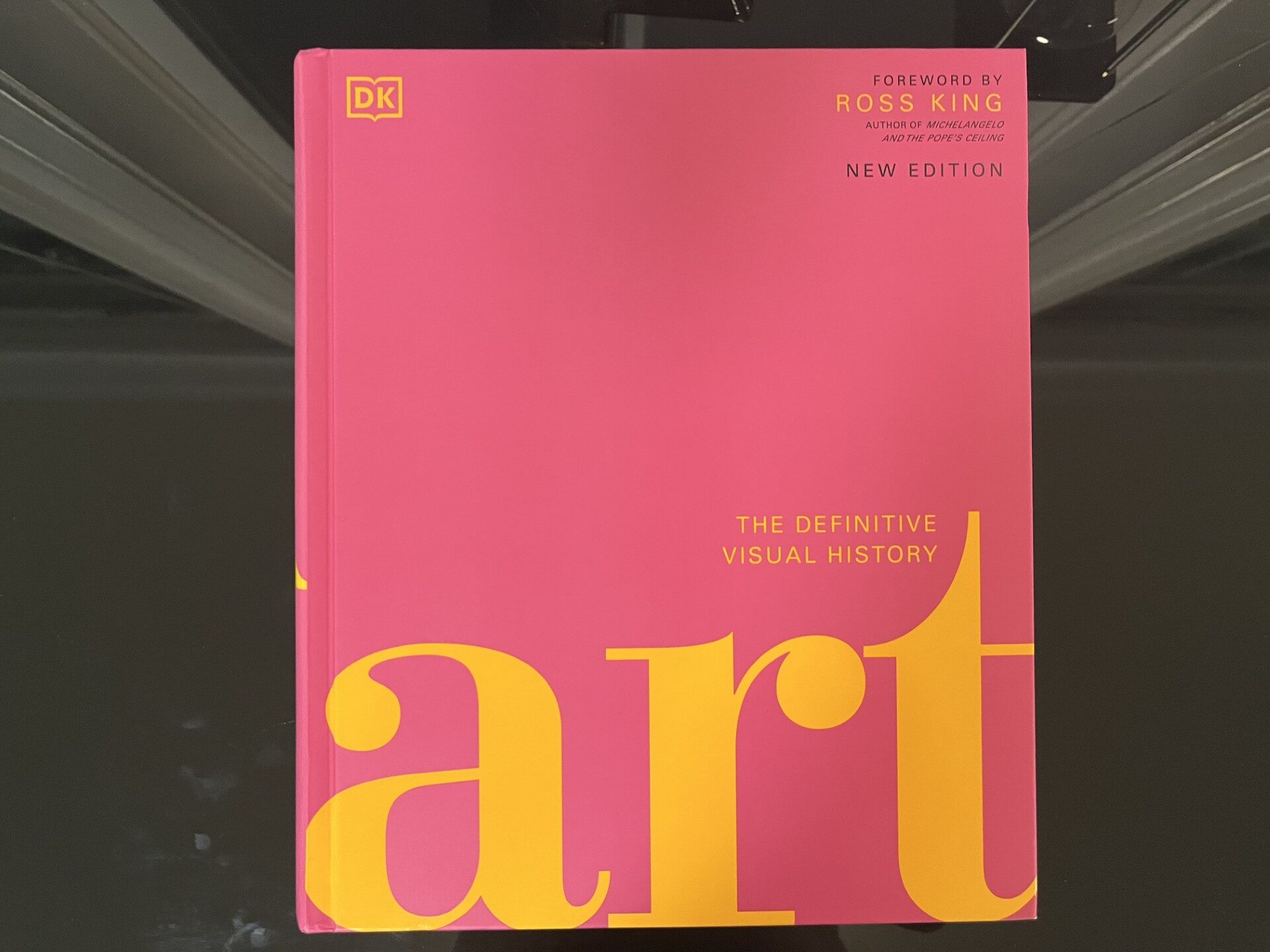Art lovers and enthusiasts will find a treasure trove in “Art: The Definitive Visual Guide.” This coffee table book beautifully showcases over 2,500 influential paintings and sculptures, spanning 30,000 years of global art history. With its high-resolution images and engaging layout, it invites readers to explore art in a way that feels both intimate and expansive.
From ancient cave paintings to contemporary masterpieces, this guide captures the evolution of artistic movements. Each page offers vivid illustrations and insightful context, making it a perfect addition to any art collection.
Whether one is an aspiring artist or simply appreciates beauty, this book serves as an inspiring reference. It not only enhances the understanding of art but also sparks curiosity and conversation, making it an ideal centerpiece for any living space.
Exploring the Essence of Art
Art captures the emotions and ideas of humanity. It serves as a mirror reflecting cultural values and experiences through time. The beauty of art lies in its ability to convey deep meanings, forged by unique techniques and historical contexts.
Defining Artistic Expression
Artistic expression is the way individuals share their thoughts and feelings through various mediums. This can include painting, sculpture, photography, and more. Each artist has their style, which adds a personal touch.
For instance, impressionism focuses on light and color effects, while abstract art emphasizes shapes and colors without representing reality.
Art provides a voice for those who may not have one. It often addresses social issues or personal experiences, making it a powerful tool for connection.

Historical Perspectives in Art
The history of art spans thousands of years and varies across cultures. Each era showcases distinct styles reflecting societal changes. The Italian Renaissance is celebrated for its revival of classical learning and humanism, prominently featured in works by artists like Leonardo da Vinci.
In contrast, modern art emerged in the late 19th century, challenging traditional forms. Movements like cubism and surrealism introduced innovative ways of seeing the world.
Understanding these historical perspectives helps readers appreciate the evolution of art. Each piece tells a story of its time, enriching the viewer’s experience.

Visual Journey Through Art History
Art reflects the human experience across different periods. Each era contributes unique styles, techniques, and themes, showcasing the creativity and expression of artists throughout history.
Prehistoric to Medieval Art
Prehistoric art marks humanity’s first expressions, including cave paintings that date back thousands of years. These artworks often feature animals and abstract symbols, revealing insights into early human life.
During the Medieval period, art became strongly influenced by religion. Illuminated manuscripts and stained glass windows illustrated biblical stories. Artists used vibrant colors and intricate designs to convey spirituality, helping viewers connect with their faith through visual storytelling.
Renaissance to Romanticism
The Renaissance sparked a revival of interest in classical antiquity. Artists like Leonardo da Vinci and Michelangelo pushed boundaries with realistic representations of the human form. They embraced perspective and anatomy, transforming the art world.
As the Romantic movement emerged, art shifted focus from reason to emotion. Artists such as Turner and Delacroix expressed intense feelings through dramatic landscapes and vibrant colors. This period celebrated individuality and imagination, inviting viewers to experience art on a personal level.
Modern and Contemporary Movements
The Modern art movement broke traditional rules, leading to diverse styles like Impressionism and Cubism. Artists such as Monet captured fleeting moments, while Picasso introduced abstraction, reshaping perceptions of art.
Contemporary art continues to evolve, often addressing current social issues. Artists use various mediums, from digital art to installations. This dynamic environment challenges viewers to think critically about society and their role within it.
Diving Deep Into Iconic Artworks
This section explores notable artworks and the various methods artists use to create them. Learning from these masterpieces helps appreciate the depth and richness found within art history.
Analyzing Masterpieces
When examining iconic artworks, viewers often focus on elements like composition, color, and subject matter. Each aspect contributes to the artwork’s overall impact.
For example, Leonardo da Vinci’s “Mona Lisa” captivates with her enigmatic smile and intricate background. The use of sfumato adds depth, making her appear lifelike.
In contrast, Vincent van Gogh’s “Starry Night” showcases bold colors and swirling patterns. His expressive brushstrokes convey emotion and movement, drawing the viewer into his world. Understanding these elements enhances the appreciation of the artwork and the artist’s intent.
Techniques and Media
Artists use various techniques and media to express their vision. Oil painting, watercolor, and acrylics each offer unique qualities.
Oil paints are favored for their richness and blending ability. Many classic works, like Rembrandt’s portraits, utilize this medium to create texture and detail.
On the other hand, watercolor allows for transparency and fluidity. Artists like J.M.W. Turner exploited its qualities to capture the beauty of light and atmosphere.
Exploring these techniques reveals the dedication and skill involved in creating art. Each medium contributes significantly to the final effect and the audience’s experience.
